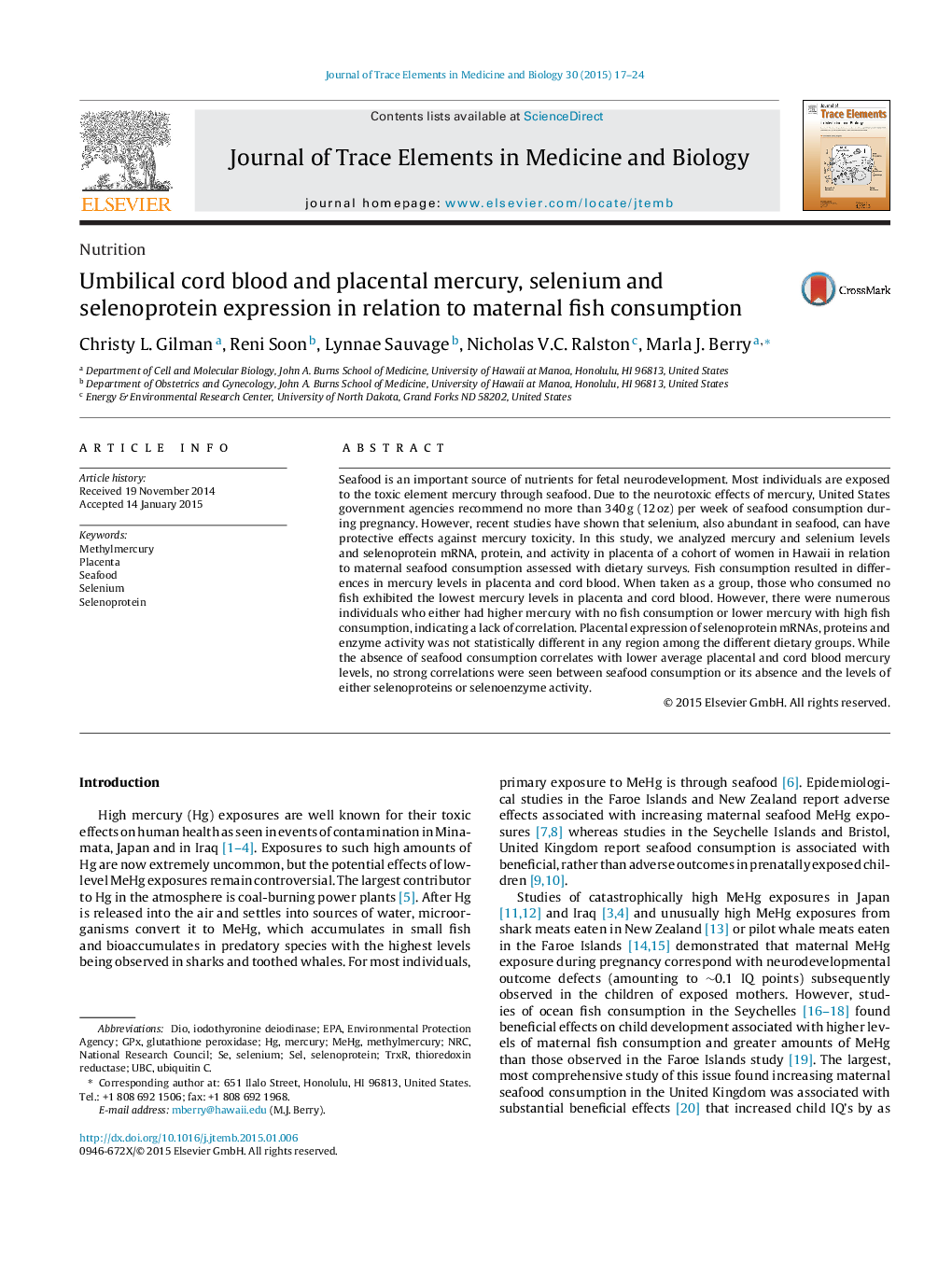| کد مقاله | کد نشریه | سال انتشار | مقاله انگلیسی | نسخه تمام متن |
|---|---|---|---|---|
| 1226360 | 1494826 | 2015 | 8 صفحه PDF | دانلود رایگان |
Seafood is an important source of nutrients for fetal neurodevelopment. Most individuals are exposed to the toxic element mercury through seafood. Due to the neurotoxic effects of mercury, United States government agencies recommend no more than 340 g (12 oz) per week of seafood consumption during pregnancy. However, recent studies have shown that selenium, also abundant in seafood, can have protective effects against mercury toxicity. In this study, we analyzed mercury and selenium levels and selenoprotein mRNA, protein, and activity in placenta of a cohort of women in Hawaii in relation to maternal seafood consumption assessed with dietary surveys. Fish consumption resulted in differences in mercury levels in placenta and cord blood. When taken as a group, those who consumed no fish exhibited the lowest mercury levels in placenta and cord blood. However, there were numerous individuals who either had higher mercury with no fish consumption or lower mercury with high fish consumption, indicating a lack of correlation. Placental expression of selenoprotein mRNAs, proteins and enzyme activity was not statistically different in any region among the different dietary groups. While the absence of seafood consumption correlates with lower average placental and cord blood mercury levels, no strong correlations were seen between seafood consumption or its absence and the levels of either selenoproteins or selenoenzyme activity.
Journal: Journal of Trace Elements in Medicine and Biology - Volume 30, April 2015, Pages 17–24
